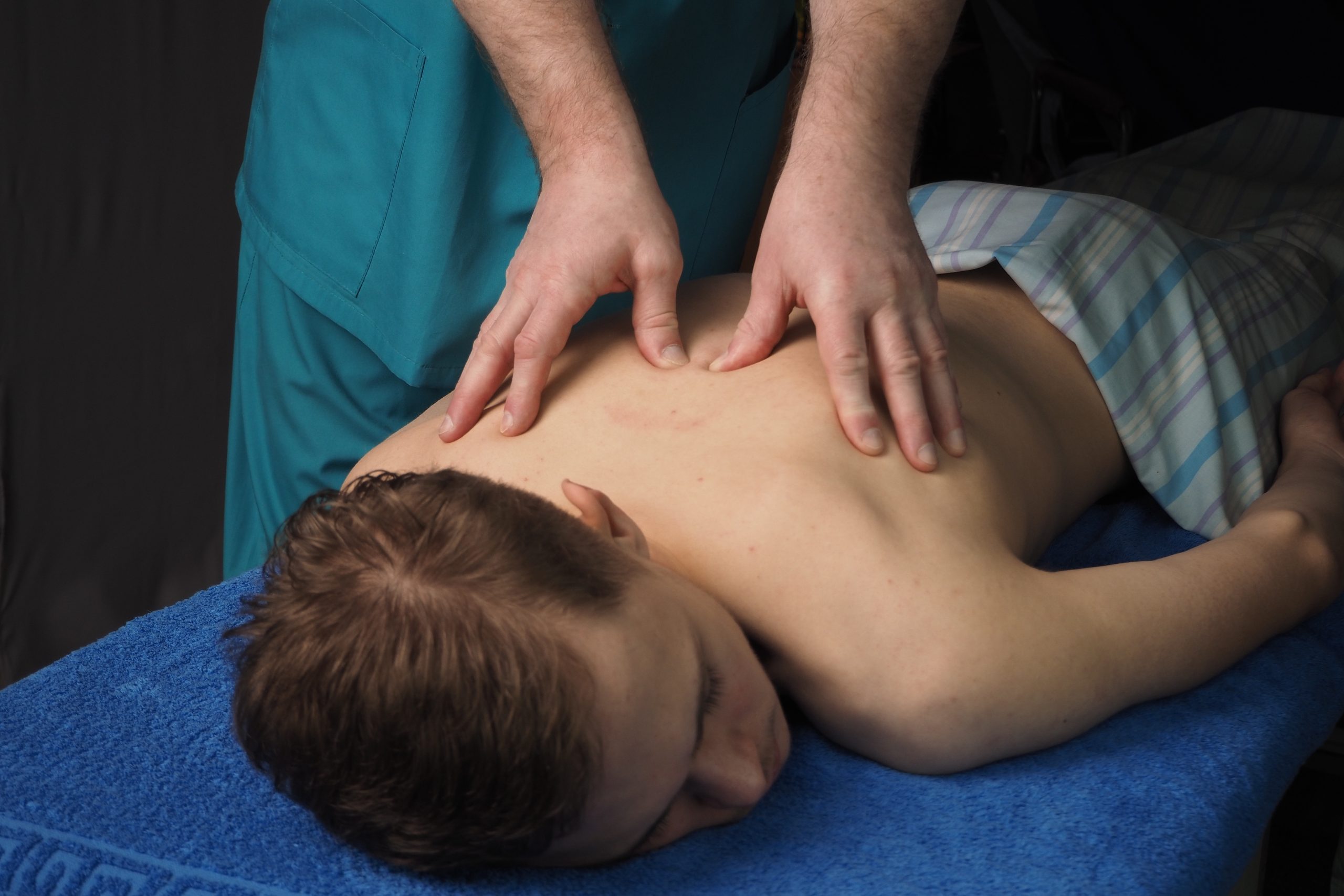
Trigger points: those painful, tight knots in muscles are one of the most common reasons people visit an osteopath. They can cause local pain, refer discomfort to other areas, and limit movement. While they don’t appear on scans, skilled hands can identify and treat them. Two of the most effective approaches osteopaths use are manual therapy and dry needling.
What is a Trigger Point?
Trigger points are small, hypersensitive spots in a muscle that feel like tight knots. They can cause:
- Localised pain and tenderness
- Referred pain to distant areas
- Reduced flexibility and range of motion
Did You Know?
Trigger points often form due to poor posture, repetitive movements, stress, or previous injuries. They’re a common source of chronic muscle pain.
Manual Therapy for Trigger Points by Osteopaths
Osteopaths are trained to use their hands to assess and release muscle tension. For trigger points, they may apply a combination of the following techniques:
1. Ischemic Compression
- The osteopath applies steady pressure directly on the trigger point.
- This temporarily reduces blood flow to the area.
- When released, fresh blood rushes back in, flushing out metabolic waste and reducing pain.
Tip: Apply pressure slowly and gradually increase intensity to avoid discomfort.
2. Stretching and Muscle Energy Techniques (METs)
- Gentle stretching is applied once the muscle is less irritable.
- METs involve contracting and relaxing the muscle in a guided way to “reset” its tone.
- Helps restore flexibility and reduces the chance of trigger points recurring.
Did You Know?
METs not only relieve tension but also improve joint range of motion and overall muscle function.
3. Soft Tissue Massage
- Deep tissue and myofascial release techniques relax surrounding tightness.
- Improves circulation, reduces stiffness, and calms the nervous system.
Key Highlight: Massage can complement other treatments by preparing muscles for more targeted therapies like dry needling.
4. Joint Mobilisation
- Restricted joints near affected muscles can contribute to trigger points.
- Gentle mobilisation restores proper biomechanics, preventing muscle overload.
Tip: Regular joint mobilisation can reduce the frequency of trigger point flare-ups.
Dry Needling for Trigger Points
Dry needling is a technique used by some osteopaths to target stubborn trigger points directly.
1. Fine Needle Insertion
- A thin, sterile needle (similar to an acupuncture needle) is inserted into the trigger point.
- No medication is injected hence the term “dry.”
2. Local Twitch Response
- The muscle may briefly twitch when the needle reaches the trigger point.
- This indicates the tight fibers are releasing.
Did You Know?
This twitch response is a sign that the muscle is resetting and helps break the pain-spasm cycle.
3. Physiological Effects
- Increases local blood flow
- Normalises nerve signalling
- Reduces pain by releasing endorphins and interrupting pain pathways
4. Aftercare
- Mild soreness or dull ache may occur after treatment.
- Usually resolves within 24–48 hours, often followed by reduced pain and improved movement.
Tip: Gentle stretching and hydration after dry needling can enhance recovery.
Benefits of Combining Manual Therapy and Dry Needling
- Manual therapy restores overall mobility and reduces global muscle tension.
- Dry needling targets stubborn trigger points directly.
- Together, they help break the pain–spasm–pain cycle and improve long-term function.
Key Highlight: Patients often experience faster relief and longer-lasting results when both methods are used in combination.
The Holistic Osteopathic Perspective
Osteopaths do not just treat the painful spot—they assess the whole body:
- Posture and biomechanics (e.g., workplace ergonomics, gait)
- Lifestyle and stress factors contributing to muscle tension
- Rehabilitation exercises to maintain progress
This holistic approach reduces the chance of trigger points returning and supports long-term recovery.
Did You Know?
Lifestyle adjustments, including ergonomics, regular movement, and stress management, can significantly reduce the formation of new trigger points.
Key Highlights
- Trigger points are common but treatable with manual therapy and dry needling
- Manual therapy techniques include ischemic compression, stretching, soft tissue massage, and joint mobilisation
- Dry needling targets specific points to relieve pain and improve muscle function
- Combining therapies offers faster, longer-lasting results
Holistic care addresses posture, lifestyle, and rehabilitation to prevent recurrence
Tips for Managing Trigger Points at Home
- Apply gentle stretching to affected muscles daily.
- Use a foam roller or massage ball for self-myofascial release.
- Maintain good posture, especially at workstations.
- Stay hydrated to support muscle health.
Take breaks from repetitive activities to reduce strain.
FAQs About Trigger Points and Dry Needling
Is dry needling safe?
Yes, when performed by a trained osteopath, dry needling is safe and sterile. Minor soreness afterward is normal.
Does it hurt?
Some people feel a brief discomfort or twitch during treatment, but most tolerate it well.
How many sessions are needed?
It depends on the severity and duration of your trigger points. Most patients notice improvement after a few sessions.
Can children benefit from cranial or dry needling techniques?
Yes, osteopaths can safely treat children with gentle techniques adapted for their age and size.
How can I prevent trigger points from returning?
Maintaining good posture, regular movement, stretching, and managing stress are essential for prevention.
Ready to Treat Your Trigger Points?
If you’re struggling with muscle tension, persistent pain, or recurring trigger points, professional care can make all the difference. David Canevaro, an experienced osteopath in Beckenham, specialises in manual therapy and dry needling to help you find relief and restore mobility.
David takes a holistic approach, combining expert hands-on techniques, personalised treatment plans, and lifestyle guidance to ensure long-term results. Whether you’re dealing with back pain, headaches, or posture-related issues, you can trust David to provide safe, effective, and compassionate care.
Book a consultation with David Canevaro today and take the first step towards a healthier, pain-free body.
